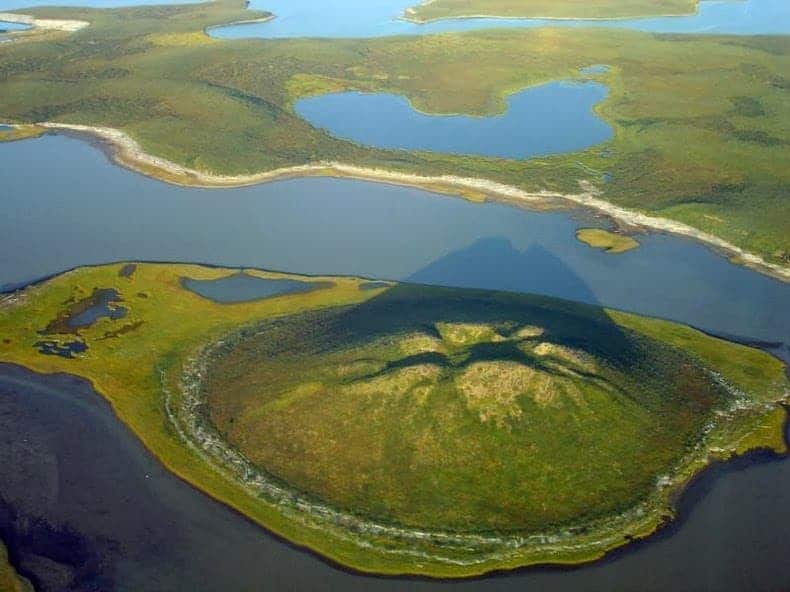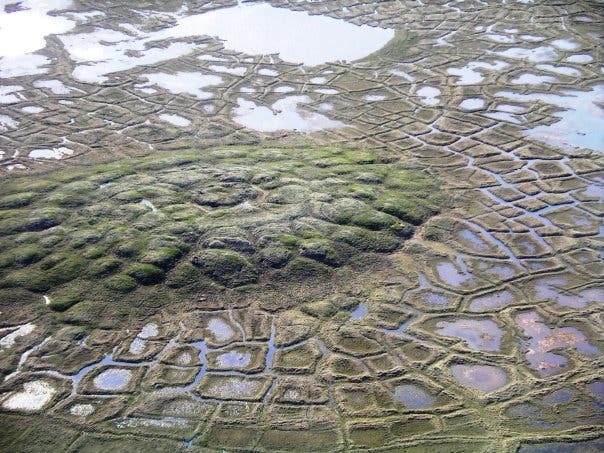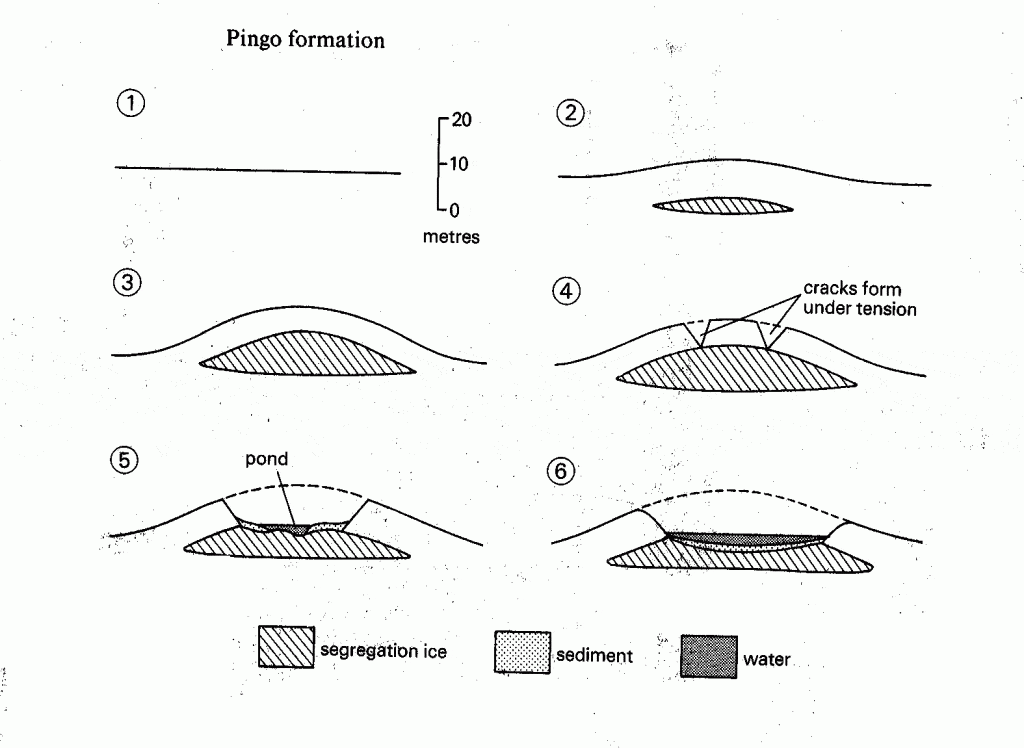
Also called hydrolaccoliths, pingos are spectacular domes of earth and vegetation covered ice usually found in the Arctic and subarctic. They can reach up to 90 metres (300 feet) high and more than 800 metres (0.5 mile) across and are usually circular or oval-shaped. They may be green on the outside, but the core is solid, clear ice.
Pingos are not easy to understand; they form when the pressure of freezing groundwater pushes up a layer of frozen ground. They can only form in a permafrost environment, where ice freezes and thaws constantly throughout the year. They are essentially formed by ground ice which develops during the winter months as temperatures fall, and they usually grow at a rate of 1-2 centimeters per year. To form entirely, they need decades or even centuries.


The core, which often accounts for most of the pingo size, is made of solid ice; the ice in the core originates from the segregation of injection of fluid water. If the overlying material breaks, the ice can become exposed and melt, creating a crater or a lake. Some larger pingos may even have large cones like some volcanoes do, potentially filled by a lake.
There are two types of pingos: open-system and closed-system.
Open-system pingos form when water flows from an external source – aquifers – in regions of discontinuous or thin permafrost. They often form at the base of slopes. Because they are always under the impact of artesian pressure, they tend to grow more (not because of the pressure directly, but because the ice core that is being fed the water from the aquifer). They are often oval in shape. The surprising thing about these formations is they also form in non-glacial areas, but scientists aren’t sure why.


Closed-system pingos, in contrast, form as a result of hydrostatic pressure, where external water sources are not available. The confined mass of saturated soil freezes, pushing the overlying material upward as it expands. They’re often found in the drained lake or river channels or in river deltas.
The earliest evidence we have of pingos comes from the Pleistocene Epoch (2.6 million to 11,700 years ago), but they would have likely formed in all periods when the climate was cool enough. Because they form in very specific conditions, they are important climate indicators and can provide valuable information about climate change.
Eventually, pingos outgrow their stability (or the underlying system changes or collapses), and they break down. The current estimate is that pingos can last about 1000 years. Tuktoyaktuk in the Mackenzie Delta has one of the highest concentrations of pingos.


